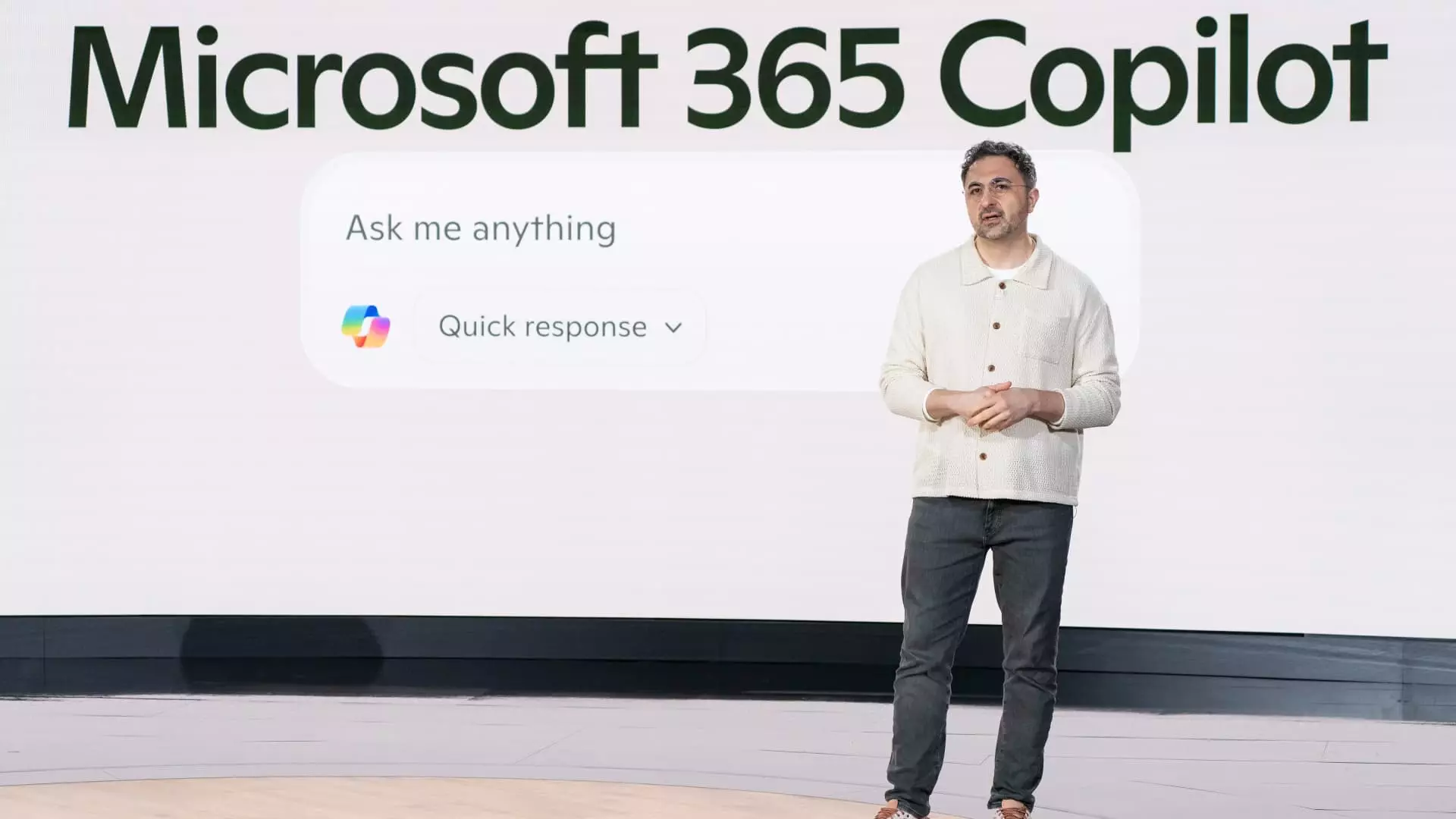In an era defined by rapid technological advancements, especially in the world of artificial intelligence (AI), Microsoft’s approach stands out for its counterintuitive nature. Instead of rushing headlong into the creation of cutting-edge AI models—more powerful than those currently available—the company is opting for a measured strategy. As Mustafa Suleyman, CEO of AI at Microsoft, articulated in a recent interview, the decision hinges on several pragmatic considerations. By waiting to build AI models that may be considered “three to six months behind” the latest breakthroughs, Microsoft places itself in a unique position to create cost-effective solutions tailored to specific use cases.
This strategic delay, referred to by Suleyman as “off-frontier,” allows Microsoft not just to save on costs, but also to refine its focus on niche applications. This method stands in stark contrast to the frantic race many tech giants are currently engaged in, where the value of being the first to market often overshadows the more subtle advantages of precision and reliability. The implications of this approach suggest that being reactive rather than proactive can be more advantageous in certain circumstances, especially in the capital-intensive world of AI development.
Deep Roots in AI Innovation
Suleyman’s background is notable; he is a co-founder of DeepMind, which Google acquired in a landmark deal in 2014. His experience uniquely positions him within Microsoft to leverage industry insights while fostering innovation. Joining Microsoft last year alongside peers from Inflection, where he served as CEO, has fortified the company’s AI capabilities. Microsoft is currently invested heavily in partnerships—gaining AI models from OpenAI while supplementing its computational power via firms like CoreWeave. This collaborative ecosystem has allowed Microsoft to enhance offerings such as Bing and Windows significantly and has made AI an integral part of Microsoft’s 50-year legacy.
However, this partnership with OpenAI—a relationship that dates back to the launch of the groundbreaking ChatGPT in late 2022—has seen its share of tension. Recently, Microsoft notably categorized OpenAI as a competitor, further complicating the dynamics between the two companies. Yet, Suleyman asserts that even with these complications, the collaboration remains inherently beneficial, aiming towards sustainable AI development over the next decade. Looking towards 2030, Suleyman emphasizes the importance of establishing a self-sufficient AI framework within Microsoft, while continuing to collaborate with OpenAI.
The Advantages of Incremental Development
One of the most enlightening aspects of Suleyman’s philosophy is the understanding of incremental development as a boon rather than a hindrance. Challenges that often accompany the race for the latest technology—such as the need for constant iteration, resource allocation, and market unpredictability—can be mitigated through a more delayed, thoughtful approach. By prioritizing reliability and specificity over raw speed, Microsoft can cultivate AI applications that not only meet current market demands but also anticipate future needs.
This approach allows them to effectively utilize smaller, open-source language models that can function on everyday PCs, aligning AI capabilities with accessibility. Such models are distinct from more cumbersome, server-centric architectures that require intense computational power, thus democratizing access to AI innovations. No longer confined to the realm of tech giants, smaller entities and individuals can harness AI technologies previously thought to be the exclusive domain of larger corporations.
The Future of AI at Microsoft
Microsoft is not merely resting on its laurels; it is actively preparing for the future. As Suleyman points out, building an internal AI capability is paramount. He acknowledges Microsoft’s robust AI team and the significant computational resources at their disposal. Yet, he insists that even with these strengths, the goal is not to rush towards the development of the ultimate AI model. Instead, Microsoft seems committed to a philosophy of sustained growth where the focus remains on building practical solutions rather than achieving arbitrary milestones in model performance.
The ongoing relationship with OpenAI, even amid shifts in the partnership dynamics, underscores a commitment to evolving in tandem with external advancements. While Microsoft remains focused on its internal AI ambitions, its strategy demonstrates a broader understanding of the ecosystem—recognizing that sometimes, playing the long game is the most effective route to technological leadership. By adopting this thoughtful approach, Microsoft aims not just to become a key player in the AI landscape but a pioneering force that prioritizes quality and applicability over mere speed.

